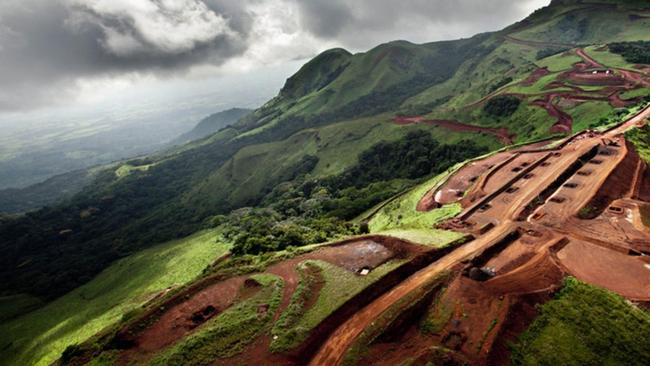Shock and iron ore – is this the last China windfall?


It’s not that the price of iron ore will drop later in the cycle — of course it will — rather, we are looking at something much more significant, the inevitable end of our splendid isolation as the lords of the seaborne iron ore trade into China.
We export the majority of our iron ore, and 85 per cent of those exports go to China.
In turn Beijing — already a difficult customer — is actively seeking alternative sources for its steel mills.
It is not a matter of whether China can find new sources. The new source will be Africa and when it comes online Australia will never again bask in a record iron ore price as it does just now.
Anyone can see this is a case of too many eggs in one basket: it’s trade economics 101 — diversify your export markets before they diversify their sources.
Just now iron ore in our market is the equivalent of a wonder drug — it’s a pillar of the local sharemarket as earnings upgrades dot the sector and the big three mining stocks — BHP, Rio and Fortescue — pump out record dividends that are better than the banks.
But investors know iron ore markets are a rollercoaster: The salad days will end with a crunch: China ultimately cools stimulus programs, steel prices fall, soon afterwards iron ore prices drop too.
Iron ore was $US40 in 2016 — this week it touched $US193.85 (the previous record price of $US193.00 per tonne was struck in 2011).
Fortescue, the “pure play” among the big miners was $3 in 2016 and today it is $22.61. Rio was $47 back then, today it is $122.
In the national accounts, Treasury strategists know the playbook all too well — that’s one reason why we have an assumption price in the budget for iron ore at $US55 (by September) which also happens to allow an unprecedented buffer against difficulties in other areas.
Nevertheless, it has to be said, the government is working on an assumption number which is looking increasingly absurd. Even if we look ahead, the industry forecasts for prices over the rest of the year rarely drop below $US100.
What’s more, the iron ore price can go a lot higher within the current cycle. Macquarie says it could break $US200 a tonne. Why not? That could happen in a matter of days.
According to industry estimates iron ore would have to get to around $US230 to be back where it was at the last peak in 2011 in real terms.
China as the big buyer of global iron ore has pushed the price this far — a 74 per cent increase in local budgets across China last year for infrastructure projects explains the bulk of the gains.
The key difference in this cycle compared to the last is that China is now playing trade hardball — the range of bans on Australian exports from coal to wine to barley tell us already that when it can tighten the screws, it will.
In the next cycle, China won’t be “co-dependent” on Australian iron ore. For our miners new exports markets are not easy to develop, and there is no market out there quite like China. But the changes have to be made now as mining is a long term game.
China is taking serious steps to diversify its sources for all commodities. African iron ore mines controlled by China — particularly the giant Simandou mine in Guinea (a partnership with Rio) — could start producing from 2025. In mining terms this is the blink of an eye.



Iron ore — Australia’s single most important export — has suddenly vaulted every record to reach an all-time high just under $US200 a tonne, but it just might be the last time we get quite so lucky on a commodity windfall.